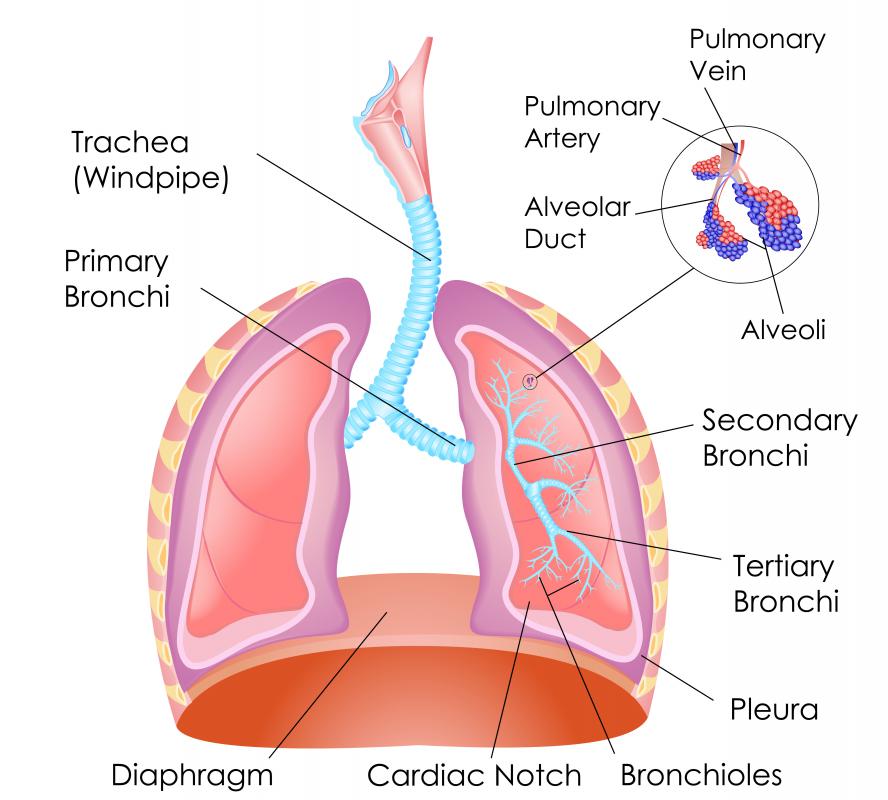At WiseGEEK, we're committed to delivering accurate, trustworthy information. Our expert-authored content is rigorously fact-checked and sourced from credible authorities. Discover how we uphold the highest standards in providing you with reliable knowledge.
What is the Diaphragm Muscle?
The diaphragm muscle is a sheet of muscle that is essential for how humans and other mammals breathe. It is a dome-shaped sheet that sits under the lungs, between the thoracic cavity of the upper chest and the abdominal cavity of the stomach. The muscle extends across the bottom of the ribcage and is the principle muscle of respiration. It contracts and relaxes as breathing takes place and is often known as the thoracic diaphragm to differentiate it from two other diaphragms in the human body, located near the pelvis.
Composed of two main sections, called the peripheral muscular part and the central aponeurotic part, the diaphragm is a complex muscle consisting of fibers and tendons. The fibers of the peripheral muscular section converge on the central part, and include the sternal, costal, and lumbar parts. The costal part descends from the ribs to compose the left and right parts of the dome that contract and expanding during respiration. The lumbar part attaches to the vertebrae in the back and connects to each side of the aorta.

The central part of the muscle is a sheet-like tendon, void of bones and shaped like a cloverleaf. It also includes many vessels, nerves, and apertures. The vessels benefit from blood and oxygen supply from the arteries and drainage into other veins.
The diaphragm muscle in its natural state is a convex dome, rounded up toward the lungs. When a breath is inhaled, the right and left sides of the dome contract from their convex shape, decreasing pressure. At this point, the pressure in the stomach is increased until the breath is held and released again, relaxing the muscles and reforming the dome shape under the lungs and ribcage once again. The cavity is enlarged during breathing, and a suction is created to help draw breath from the mouth down into the diaphragm.

Performing other essential actions of the body, the diaphragm muscle is also important to the processes ridding the body of vomit, feces, and urine. It increases abdominal pressure on the muscles responsible for excretion, and allows for the action when it is necessary. It is also useful in preventing acid reflux. Other animals, like certain reptiles, also have a diaphragm, though it does not follow the same basic structure that it does in mammals.
AS FEATURED ON:
AS FEATURED ON:















Discussion Comments
@Anon55769: I think anon52954 meant the site is cool, as in neat and interesting. It's already apparent it's science. No need to overanalyze a simple comment.
Please, can some knowledgeable person tell whether by birth, the diaphragm in human body can be in a position which is not exactly normal; so that it causes never ending coughs and colds unless its position is restored to normal, by surgery?
It's not cool, it's science. this is cool? well that phrase could be developed at a higher standard to give the author a little more credit.
This is cool.
Post your comments